solution Use Case
Managing monitoring in dynamic environments such as MCR
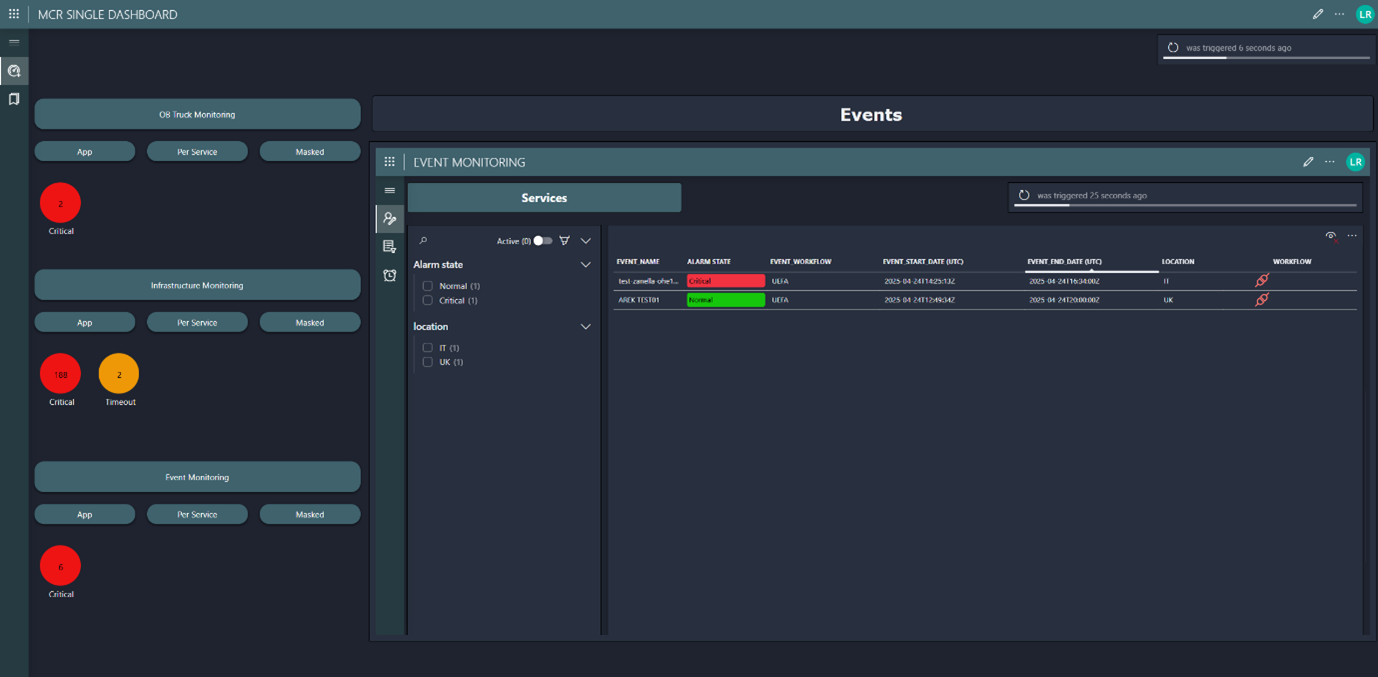
In dynamic and high-pressure environments like Master Control Rooms (MCRs), maintaining visibility and control over complex monitoring systems is mission-critical—especially because monitoring workflows and connected devices frequently change. To meet these demands, we adopted a microservices architecture to develop and deploy the OB Truck Monitoring, Event Monitoring, and Infrastructure Monitoring applications. This modular approach allowed us to build and scale each monitoring capability independently, while ensuring seamless integration across systems.
Leveraging this architecture, we introduced the MCR Single Dashboard, which consolidates alerts and operational data from these three applications into a single interface. This unified view eliminates the inefficiencies of switching between separate systems, significantly improving situational awareness and incident response times for MCR operators.
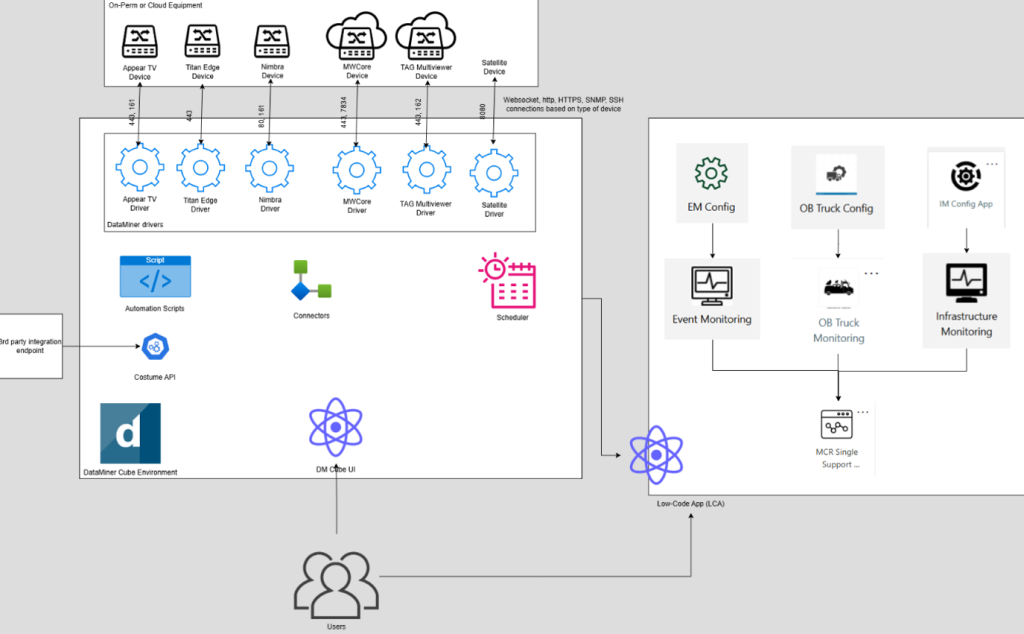
A cornerstone of our strategy was the development of no-code applications, enabling engineers and operators to configure and manage their monitoring environments independently, without requiring coding knowledge. This approach empowered teams to customize their monitoring workflows, adapt rapidly to operational changes, and reduce dependency on development resources.
Additionally, we focused on the automation of service creation and alert management, minimizing manual configuration while improving the reliability and consistency of monitoring setups. Automated alarm masking, ownership assignment, and service creation have streamlined incident handling and contributed to a more responsive, resilient MCR operation.
Through this combination of microservices architecture, no-code enablement, and intelligent automation, the MCR Single Dashboard represents a future-ready solution for managing diverse broadcast and production infrastructures with confidence and agility.
The result is an operationally efficient, centralized system that reduces reaction time and human error while improving visibility and workflow across critical systems.
Key features
- Centralized monitoring across multiple domains: Aggregate alarms and monitoring data from the Event Monitoring, OB Truck Monitoring, and the Infrastructure Monitoring applications into a single, unified dashboard—eliminating the need to switch between multiple interfaces.
- Modular microservices architecture: Built using a microservices-based design, enabling scalable, independent development and deployment of each monitoring domain, with seamless integration into the overarching MCR dashboard.
- No-code configuration for operational flexibility: Empower operators and engineers to independently configure and manage their monitoring systems through intuitive, no-code interfaces—removing reliance on development teams for routine changes.
- Intelligent alarm management: Streamline alarm workflows with features such as alarm masking/unmasking, ownership assignment, and filtered views by severity or service, enabling faster and more organized incident response.
- Integrated workflow visualization: Visualize device interconnections and signal flows within the dashboard, helping operators understand dependencies and troubleshoot issues more effectively.
- Automated service creation: Reduce manual set-up time and ensure configuration accuracy by automating the creation of monitoring services based on predefined config applications.
- Bookmark management for quick access: Centralized bookmark functionality allows operators to organize and access device UIs quickly. Grouped bookmarks minimize duplication and reduce the risk of human error.
- Seamless application navigation: Direct access to each full monitoring application (Event, OB Truck, Infrastructure) from within the dashboard for deeper analysis, while maintaining high-level visibility.
USE CASE DETAILS
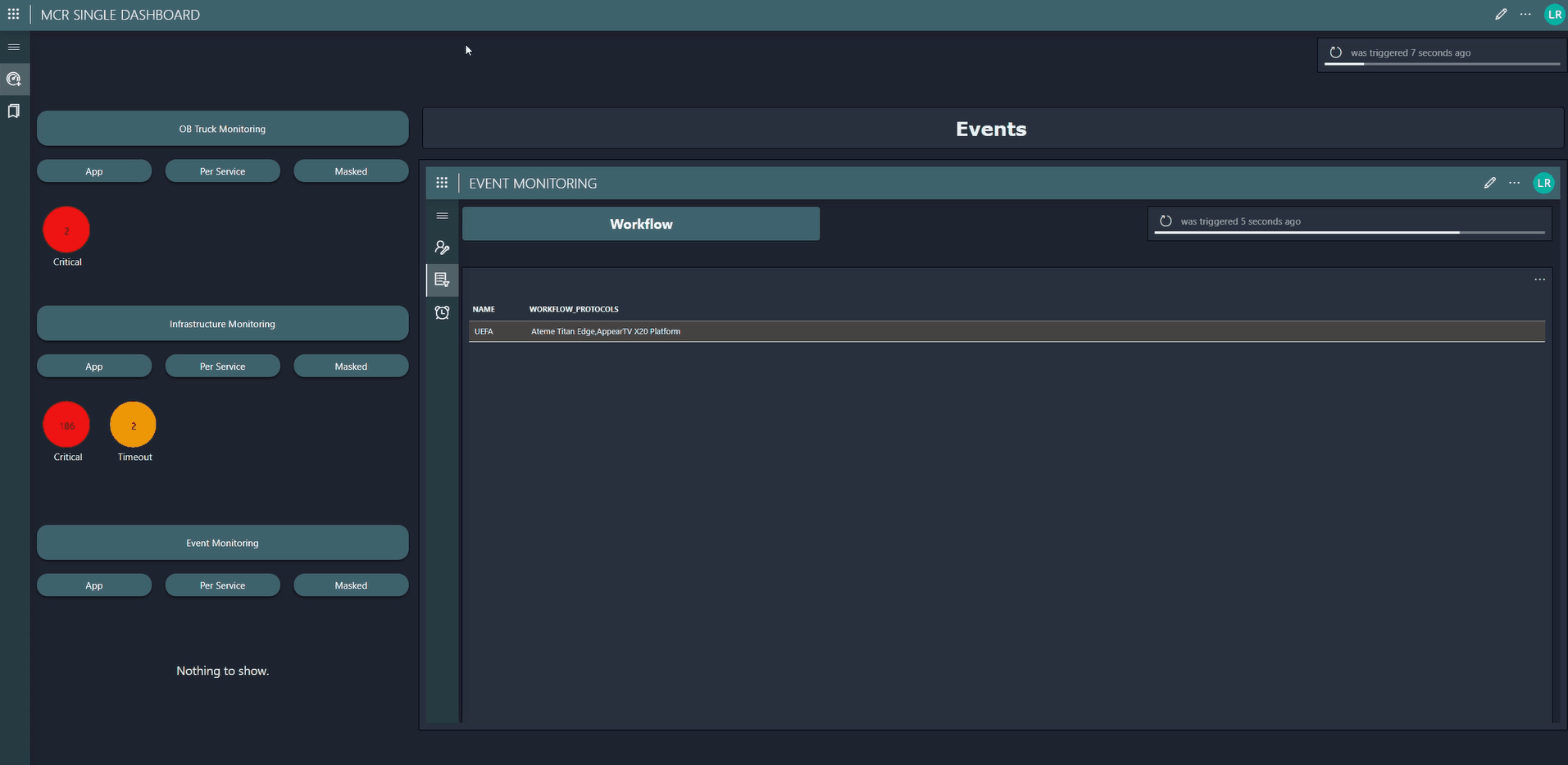 The Event Monitoring application is fully embedded in the right panel of the dashboard, enabling operators to track, filter, and respond to incidents directly from the central interface.
The Event Monitoring application is fully embedded in the right panel of the dashboard, enabling operators to track, filter, and respond to incidents directly from the central interface.
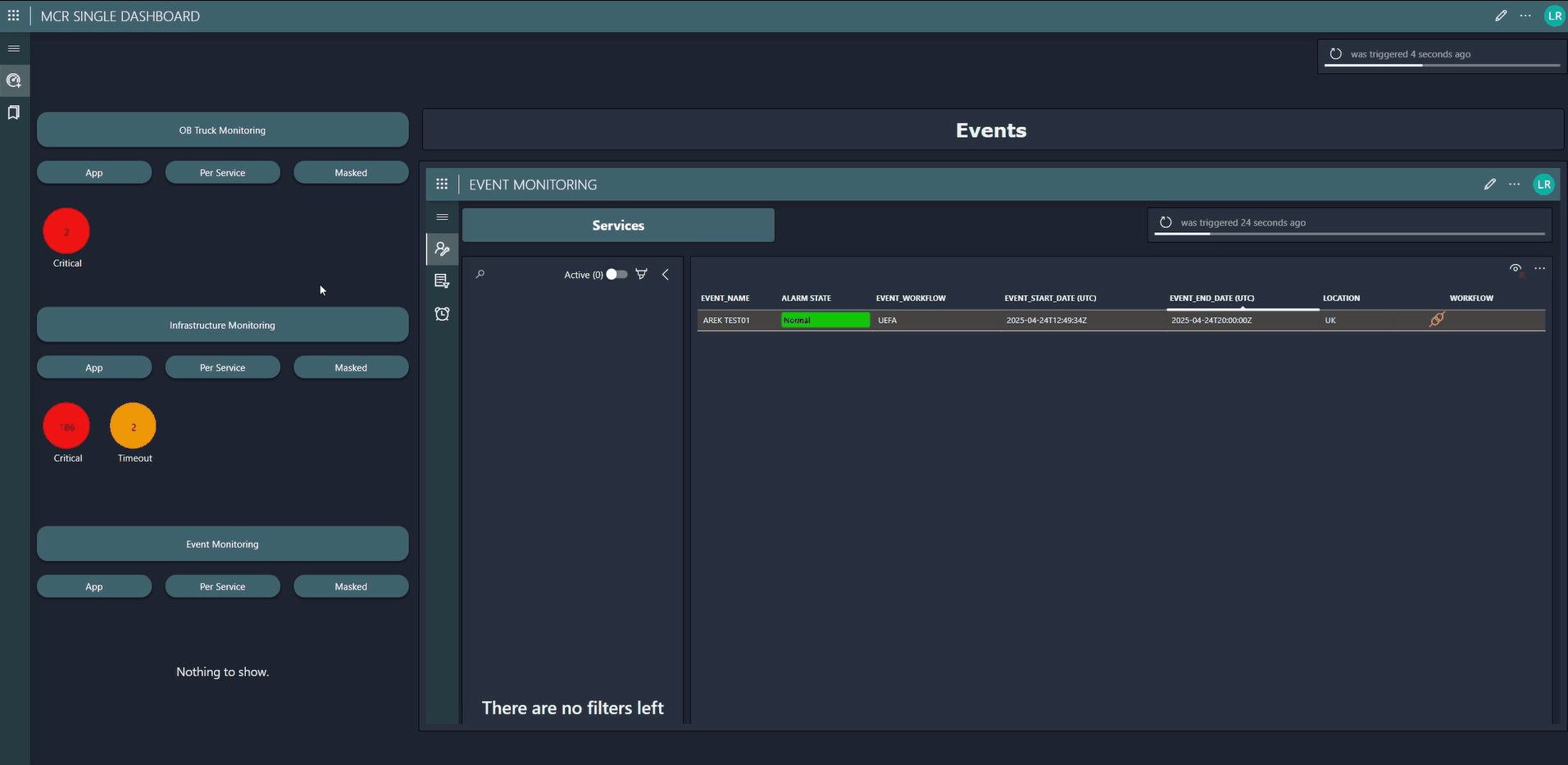 The panel on the left provides an overview of the number of alarms detected for each of the three monitoring apps, displayed by severity. When you click the name of a monitoring app or one of the severity levels, you gain access to detailed information that allows for focused troubleshooting. Operators can also launch full apps in a side panel for deeper analysis.
The panel on the left provides an overview of the number of alarms detected for each of the three monitoring apps, displayed by severity. When you click the name of a monitoring app or one of the severity levels, you gain access to detailed information that allows for focused troubleshooting. Operators can also launch full apps in a side panel for deeper analysis.
The interface supports full alarm life cycle management, with actions to mask or unmask alarms, take or release ownership, and filter for owned or masked alarms—ensuring accountability and incident traceability.
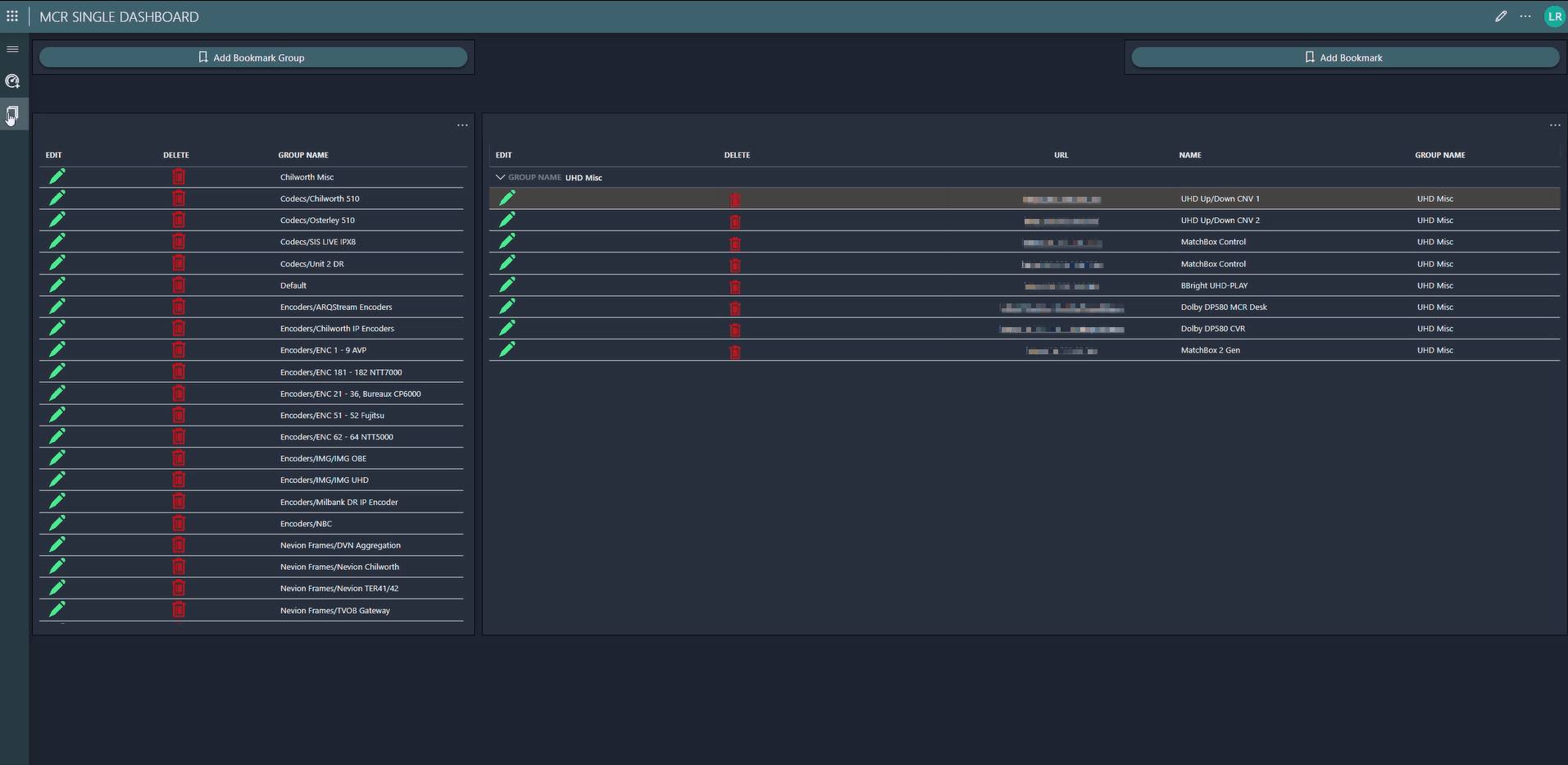 The Bookmark page empowers operators to create and manage categorized bookmark groups containing device GUI links. This centralization enhances operational efficiency by minimizing miscommunication and duplicate configurations.
The Bookmark page empowers operators to create and manage categorized bookmark groups containing device GUI links. This centralization enhances operational efficiency by minimizing miscommunication and duplicate configurations.
1 thought on “Managing monitoring in dynamic environments such as MCR”
Leave a Reply
You must be logged in to post a comment.
Wow, thank you for sharing. This is very inspiring!